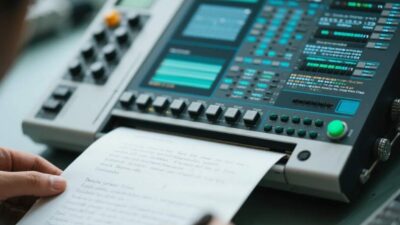The Rise of Deepfake Propaganda – A New Frontier of Deception
In the digital age, information spreads faster than ever—and so does deception. Deepfake propaganda, powered by artificial intelligence (AI), has emerged as one of the most insidious threats to public trust, democracy, and global stability. By leveraging machine learning to generate hyper-realistic fake videos, audio, and text, bad actors can manipulate narratives, sow division, and even incite violence. From falsified political speeches to fabricated evidence of crimes, deepfakes exploit human psychology, making it harder to distinguish truth from fiction.
Yet, AI is not just a tool for deception—it is also our most powerful ally in the fight against it. This article explores how AI is used to create deepfake propaganda, how it is being countered through detection and neutralization, and the ethical and societal challenges that define this high-stakes battle.
Deepfake Propaganda: How AI Enables Deception
Deepfake propaganda relies on generative AI—models trained to create content indistinguishable from human-made media. The most common techniques include:
1. Generative Adversarial Networks (GANs): The Workhorses of Deepfakes
GANs pit two neural networks against each other: a generator (which creates fake content) and a discriminator (which tries to distinguish real from fake). Over time, the generator learns to produce content so realistic that the discriminator can no longer tell it apart. This technology underpins most deepfake videos, from fake celebrity interviews to forged political addresses.
2. Deep Learning for Audio and Text
Beyond visuals, AI models like WaveNet (for audio) and GPT-3/4 (for text) generate hyper-realistic voice clones and persuasive text. For example, a voice clone of a politician can “announce” a false policy, while a GPT-generated article can spread conspiracy theories with plausible-sounding language.
3. Metadata Manipulation
Deepfakes often include forged metadata (e.g., timestamps, locations) to enhance credibility. AI tools can alter EXIF data in images or manipulate video timestamps, making it harder for humans to spot inconsistencies.
AI as a Defender: Detecting Deepfake Propaganda
The same AI that enables deepfakes is now being harnessed to detect them. Researchers and tech companies are developing tools that analyze content for subtle anomalies, leveraging machine learning to identify patterns unique to AI-generated media.
1. Image and Video Detection: Spotting the “Uncanny Valley”
Human faces and movements have subtle, involuntary cues (e.g., micro-expressions, pupil dilation) that AI struggles to replicate. Detection tools use:
- Convolutional Neural Networks (CNNs): Analyze pixel patterns to detect inconsistencies in skin texture, lighting, or facial symmetry.
- Optical Flow Analysis: Track eye movements or head tilts to identify unnatural behavior.
For example, Meta’s Deepfake Detection Challenge (2020) trained models to detect fake videos with 97% accuracy by focusing on “artifact patterns” left by GANs.
2. Audio Detection: Unmasking Voice Clones
AI-generated voices often lack the subtle variations of human speech, such as breath pauses or pitch fluctuations. Tools like Resemble.ai and Descript use:
- Recurrent Neural Networks (RNNs): Analyze audio waveforms to detect unnatural pauses or tonal shifts.
- Speaker Embeddings: Compare voice patterns to known authentic samples to flag clones.
3. Text Detection: Parsing Fabricated Narratives
Large language models (LLMs) like GPT-3 can generate coherent text, but they often repeat phrases, use overly formal language, or include factual errors. Tools like GPTZero and Originality.ai analyze:
- Perplexity: Measures how “surprising” the text is (low perplexity indicates AI-generated content).
- Burstiness: Tracks sentence length variability (AI tends to produce more uniform text).
4. Multi-Modal Detection: Cross-Verifying Signals
The most effective detectors combine image, audio, and text analysis. For instance, a video claiming to show a politician admitting to corruption might be flagged if:
- The facial expressions don’t match the audio (e.g., a “confession” delivered with a smile).
- The background noise doesn’t align with the location (e.g., ocean waves in a desert setting).
- The text of the “confession” contains grammatical errors inconsistent with the speaker’s known style.
Neutralizing Deepfake Propaganda: Beyond Detection
Detection is only the first step. Neutralizing deepfake propaganda requires disrupting its spread and restoring trust. Key strategies include:
1. Content Moderation and Platform Accountability
Tech companies like Meta, Twitter, and YouTube use AI detectors to flag deepfakes and remove or label them. For example:
- YouTube’s Deepfake Policy: Requires creators to disclose AI-generated content and removes videos found to be “misleading.”
- X (formerly Twitter): Labels deepfakes with warnings and limits their reach.
2. Fact-Checking and Public Awareness
Organizations like Snopes, Reuters Fact Check, and Full Fact partner with AI tools to debunk deepfakes. For instance, during the 2020 U.S. election, fact-checkers used AI to trace viral fake videos back to their origins, exposing coordinated disinformation campaigns.
3. Legal and Regulatory Frameworks
Governments are stepping in to regulate deepfakes. The EU’s Digital Services Act (DSA) mandates that platforms proactively detect and remove illegal content, including deepfakes. In the U.S., the Deepfake Accountability Act (proposed) would require watermarking AI-generated content and holding creators liable for misuse.
4. Community Empowerment
Grassroots efforts, like Deepfake Detection Labs and Citizen Evidence, train civilians to spot deepfakes using simple tools (e.g., reversing videos to check for unnatural lip-syncing). By educating the public, societies build resilience against manipulation.
Challenges: The Arms Race Between Creators and Detectors
The fight against deepfake propaganda is a high-stakes “arms race”:
- Evolving Threats: As detectors improve, so do deepfake generators. For example, newer GANs use diffusion models (inspired by physics) to create even more realistic content, bypassing older detection methods.
- Bias in Detection: AI detectors trained on Western datasets may fail to detect deepfakes in non-Western contexts (e.g., different facial features or cultural gestures).
- Ethical Risks: Over-reliance on AI detectors could lead to censorship, with legitimate content (e.g., satire, artistic deepfakes) mistakenly flagged as propaganda.
Case Studies: AI in Action Against Deepfakes
- 2020 U.S. Election: Fake videos of Joe Biden and Donald Trump “admitting” to election fraud went viral. AI tools like Truepic (which uses blockchain to verify media authenticity) and Amnesty International’s deepfake detector flagged these videos, enabling fact-checkers to debunk them within hours.
- COVID-19 Misinformation: During the pandemic, deepfakes spread false claims about vaccines (e.g., “vaccine causes infertility”). Platforms like TikTok used AI to detect and remove such content, while WHO partnered with Deeptrace to analyze viral videos and trace their origins.
- Corporate Sabotage: In 2023, a rival company used deepfakes to forge emails from a CEO, attempting to steal trade secrets. AI-powered email analysis tools detected the forgery by flagging inconsistencies in language and metadata, preventing the breach.
The Future: AI as a Force for Truth
The future of AI in combating deepfake propaganda lies in innovation and collaboration:
- Advanced Detection Models: Multi-modal AI (combining image, audio, and text) and neurosymbolic AI (which combines neural networks with logical reasoning) will improve accuracy.
- Global Standards: International bodies like the UN and OECD are working to establish guidelines for AI detection, ensuring consistency across borders.
- Ethical AI Development: Frameworks like Responsible AI Institute (RAI) promote transparency in detector design, preventing bias and misuse.
A Battle for Truth in the Digital Age
Deepfake propaganda represents a fundamental threat to the fabric of trust in society. Yet, AI is not just a weapon of deception—it is our most potent tool for defense. By leveraging AI to detect, neutralize, and educate, we can reclaim control over our information ecosystem.
As journalist Nikole Hannah-Jones once said, “Truth is the first casualty of war.” In the digital age, the war for truth requires vigilance, innovation, and collective action. With AI as our ally, we can turn the tide against deepfake propaganda and safeguard the integrity of our shared reality.



